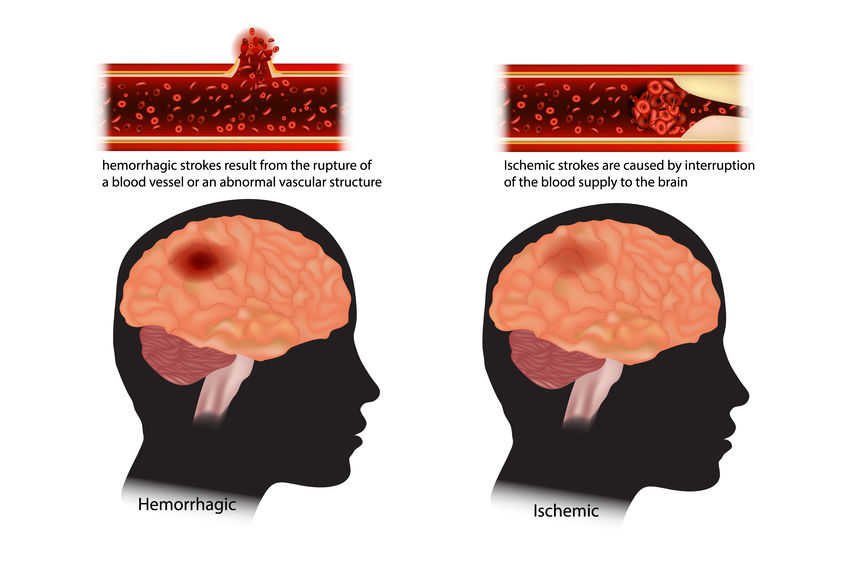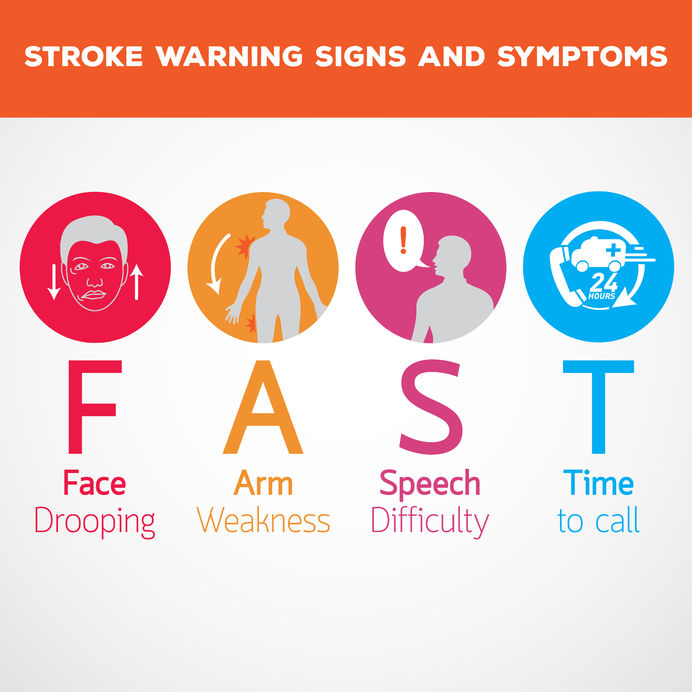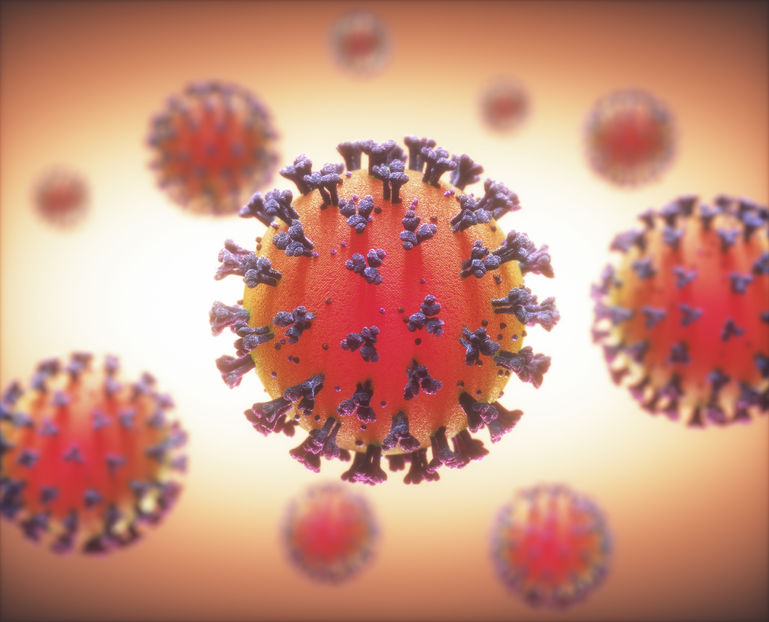When the SARS-CoV-2 (the virus that causes COVID-19) pandemic began the only thing most experts were sure about is that the virus seems to attack the lungs, much like the SARS virus that was identified in 2002. The most common symptoms associated with COVID-19 are sore muscles and joints, sore throat, and difficulty breathing. As experts learn more and more about the novel virus, some doctors and researchers have discovered that the virus may be causing another sinister type of symptom in younger patients. According to medical experts, patients who are in their 30’s and have no underlying risk factors are experiencing strokes after contracting COVID-19. Even if symptoms are mild, experts suggest that the risk for developing a stroke is eight times higher than the common cold or flu when you have COVID-19.
Here is what you need to know about this new information linking strokes to COVID-19.
How Does COVID-19 Affect The Body?
According to the current research, the SARS-CoV-2 virus attaches itself to cells in the nose, mouth, throat, and lungs. Once it has invaded those cells, the virus begins to replicate, causing symptoms most associated with the seasonal flu. For some, these symptoms start to develop into more severe respiratory illnesses like pneumonia where others do not experience any symptoms at all. Some individuals may also be left with permanent scarring on the lungs, which may or may not cause problems in the future, but still means you can go on to live a full life.
For others, the virus causes more damage than just scarring on your lungs. It kicks your entire immune system into overdrive by releasing cytokines (proteins) to help fight the infection. We need these cytokines to help kill off most bacteria and viruses that enter our system, but when the immune system releases too many of them, they start to kill off everything in their wake, including healthy cells.
This phenomenon has been dubbed the cytokine storm by medical professionals. When a cytokine storm occurs, it causes an enormous amount of inflammation within the body, which weakens the lining of blood vessels. As the fluid in the blood vessels starts to leak, it begins to fill air sacs in the lungs with fluid, which leads to respiratory failure.
Beyond The Respiratory Symptoms
Besides respiratory symptoms, medical professionals have noticed a common trend amongst some COVID-19 patients – blood clots. It is difficult to pinpoint exactly what causes the blood clotting but there are three main factors behind blood clots.
- Injury to the inner lining of blood vessels, which is the case when an injury or infection occurs and the body releases specific proteins to clot the blood in the affected area.
- When blood flow becomes stagnant. This can occur due to diseases like atherosclerosis (buildup of plaque in the arteries), poor circulation, or when you are immobile or confined to a hospital bed for very long periods of time.
- The blood vessels contain too many platelets and wound healing proteins, which is triggered by chronic inflammation or some hereditary diseases.
Medical professionals believe that the cytokine storm and these are all contributing factors behind clotting in COVID-19 patients, which is why people with underlying comorbidities like obesity are at a much higher risk of developing severe symptoms. However, abnormal clotting also occurs in some patients who don’t have symptoms in the form of micro clots that manifest in the lungs and other organs, which medical professionals have not been able to wrap their heads around yet.
Higher Risk Of Strokes
The rise in strokes occurring in younger COVID-19 patients with no underlying cardiovascular disorders is believed to be due to the micro clotting. The development of these micro clots either travel to the lungs or the brain and block blood flow, which results in a pulmonary embolism or ischemic stroke – a stroke that occurs as a direct result of blocked vessels that supply the brain with blood flow.

According to the CDC, ischemic strokes affect 140,000 Americans a year with a strong link to underlying diseases like cardiovascular disease and atherosclerosis. When an ischemic stroke prevents blood from reaching the brain for a long period of time, it can affect the area of the brain that is responsible for seeing, speaking, and walking, which has been seen in some COVID-19 patients.
In some cases, COVID-19 patients experience a hemorrhagic stroke rather than an ischemic stroke, which occurs when blood vessels burst and bleed into the brain, causing an enormous amount of pressure on the brain tissue.
Other Risk Factors For Stroke During The COVID-19 Pandemic
The SARS-CoV-2 virus is not the only risk factor to blame during this pandemic. As we mentioned before, ischemic strokes are nothing new and account for 1 in every death in America and can be brought on due to other disorders that affect blood flow or cause a buildup of plaque in the arteries.
Due to the fear of contracting the virus, many people are skipping out on their regular medical check-ups for screenings, prescription renewals, and general health checks. For some, the fear of the virus has caused them to not reach out for any medical assistance in an emergency either.
By not taking your prescribed medication for diseases that put you at risk for strokes or by missing out on important medical check-ups, it only puts you at more risk, and in some cases, it can be something completely preventable by just seeing a medical professional.
While the virus is a very real threat to all of us, leaving a medical condition for too long may be detrimental to your health. It is important to know that hospitals, clinics, and doctor’s rooms are a safe environment and the medical staff have gone above and beyond to ensure the safety of you and others.
How To Prevent A Stroke
The only way to prevent a COVID-19 related stroke is to stay at home, wash your hands, and always keep a safe distance from others.
With regards to your general health, eating a healthy diet, getting regular exercise, and avoiding alcohol and smoking are the best lifestyle changes you can make to help lower the risk of developing a stroke. Making these lifestyle changes is also beneficial for preventing diseases that are linked to a higher risk of strokes such as obesity, atherosclerosis, high blood pressure, high cholesterol, and heart disease.
Symptoms To Look Out For

An ischemic stroke is a medical emergency and should not be left untreated. Early treatment can help prevent brain damage, as we mentioned before, when the brain is deprived of oxygenated blood, it can cause permanent damage to your speech, eyesight, or movement. Seek medical assistance if you experience any of these symptoms:
- Difficulty walking or keeping your balance.
- Paralysis or loss of coordination.
- Blurred vision or temporary loss of vision.
- Slurred speech or difficulty speaking.
- Vertigo and dizziness.
- Sudden onset of a severe headache.
- Numbness or pins and needles.
- Facial droop on one side.
- Mental confusion, disorientation, or rapid involuntary eye movement.
- Difficulty swallowing.
The Bottom Line
While CoVID-19 is thought to be a respiratory disorder, doctors are discovering new symptoms every day. Research has linked a heightened risk of strokes even in patients who are young and have mild symptoms due to micro clots that flood the blood vessels and organs. If you are experiencing any symptoms such as loss of speech, trouble walking, mental confusion, or a facial droop, it is important to seek medical assistance immediately.

